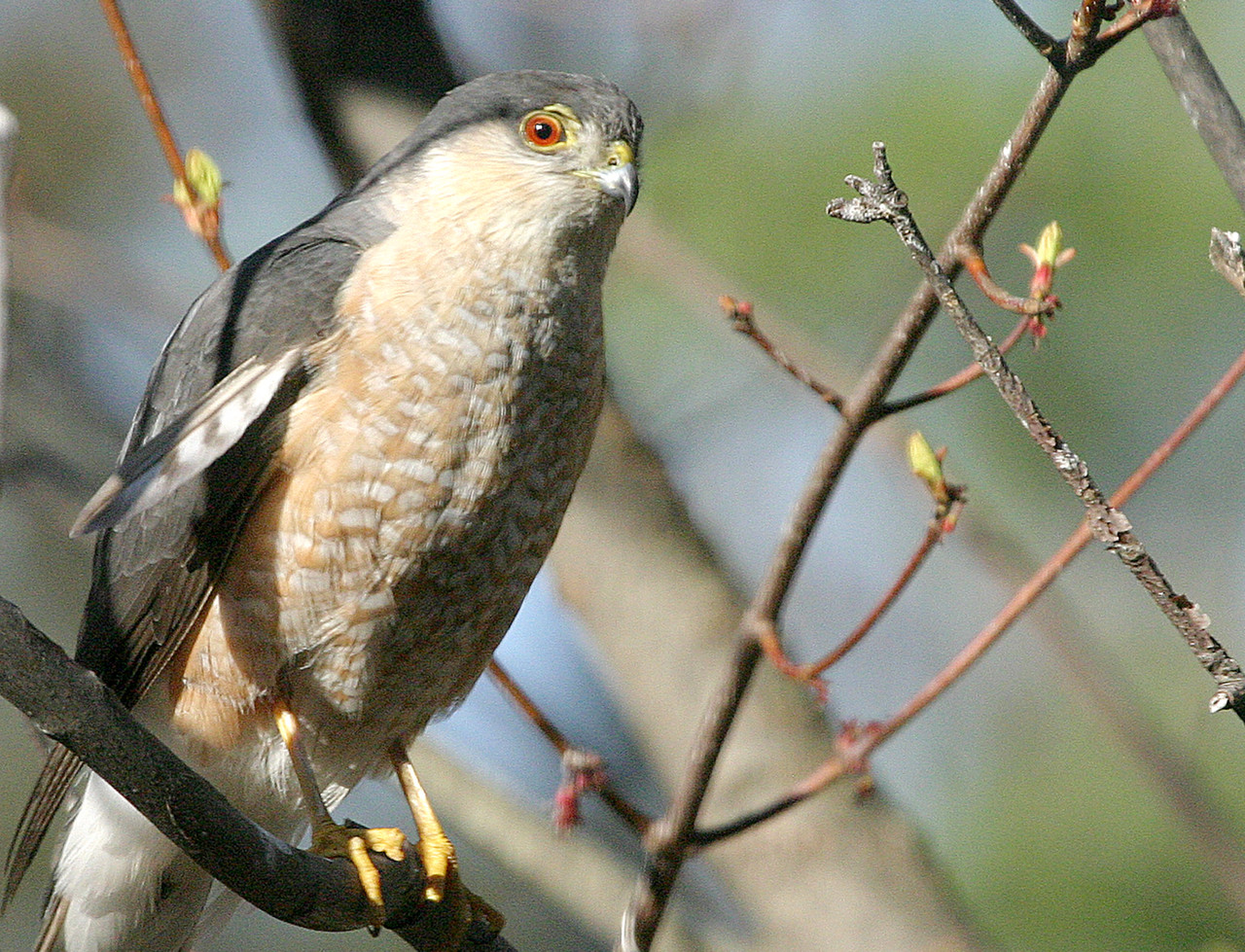Support the Timberjay by making a donation.
Hawk eye: For sharp-shinned hawks, migration is the best of times
For sharp-shinned hawks in the North Country, September is a season of plenty.
It’s the peak of migration for most small birds, and that means easy pickings for sharp-eyed …
This item is available in full to subscribers.
Attention subscribers
To continue reading, you will need to either log in to your subscriber account, below, or purchase a new subscription.
Please log in to continue |
Hawk eye: For sharp-shinned hawks, migration is the best of times
For sharp-shinned hawks in the North Country, September is a season of plenty.
It’s the peak of migration for most small birds, and that means easy pickings for sharp-eyed predators.
Sharp-shinned hawks, in particular, are partial to small birds (sparrows, warblers, chickadees, etc.) and with huge numbers of inexperienced young birds in the woods right now, it’s a smorgasbord.
Sharp-shinneds are our second smallest hawk (the kestrel is the smallest), but they are relentless and efficient hunters. If you have bird feeders around your house, as I do, you’ve probably had a sharp-shinned show up a time or two. Their sudden appearance will send birds scattering instantly and turn a yard that was noisy and active just seconds ago into a seemingly silent and lifeless place.
While we normally think of hawks as birds that show up out of the blue and catch their prey by sneak attack, that’s not always the case. More than once, I’ve witnessed sharp-shinned hawks, after scattering birds from the feeder, methodically hunting on the ground, slowly pacing back and forth (think tiny velociraptor), looking intently for small birds that were hiding in heavy cover or under rocks or logs.
Of course, sometimes, they do attack seemingly from nowhere. I still remember the time I was hand-feeding chickadees near an empty bird feeder, when a sharp-shinned swooped in and grabbed one of them from just inches above my hand. The impact was so loud (it seemed almost like a rifle shot) and it happened so fast that, at first, I didn’t know what had turned my friendly chickadee into a cloud of feathers. But then I saw the sharpy flapping off into the woods with its little victim in tow. I’m just glad he didn’t take my hand with it.
Sharp-shinneds are the smallest of the accipiters, a genus of hawks that include the similar, but larger, Cooper’s hawk and the much larger and more powerful Goshawk. All three of these are forest hawks that feed mostly on other birds as well as small mammals (goshawks will take prey as large as snowshoe hares).
With much of their prey now in migration, the sharp-shinned and Cooper’s hawks are also heading south— although the hawks from our region don’t go too far south. Sharp-shinneds regularly winter as far north as southern Minnesota, and I’ve even seen them in our area well into the snow season. At Hawk Ridge in Duluth, late September is typically the peak of the sharpy migration, although it’s not unusual to see the last ones moving past the ridge as late as Thanksgiving.
In a normal year, more than 10,000 sharp-shinned hawks are sighted moving past Hawk Ridge, and the highest number ever recorded in a season is over 22,000.
With that many moving through the area right now, you’re likely to see one if you spend much time at all in the woods. Small birds see them all the time, which is one reason they’re always on the lookout.






